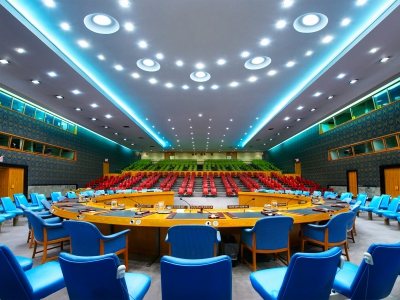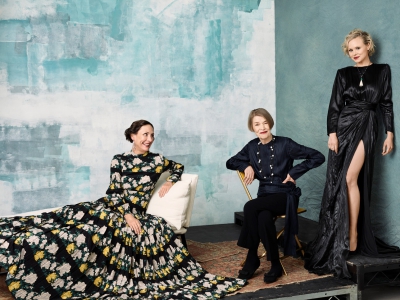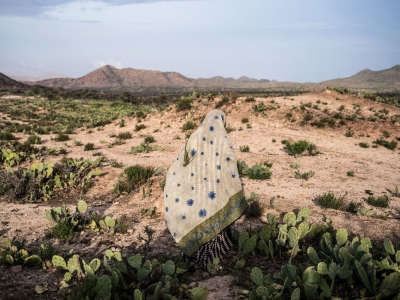LBR. Reflecting on the unique challenges of photographing climate change in meaningful ways, there seems to be two, at times contradicting, obstacles. On the one hand, some of the changes are hard to visualize because they happen incrementally. On the other hand, since it’s not a new phenomenon, there’s already been a wealth of coverage, leading to viewer fatigue or apathy. How do you get people to see nature as a being worth caring for?
AVE. As much as I can, I try (to) have a certain amount of poetry in my images to both capture the eye of the reader and make them see that our relationship with it is sacred. In this respect, I’ve worked on a couple of long-term projects that focus on communities whose culture, lives and well-being are dependent on the health of the land, and who are now experiencing the industrial colonization of their space. I’ve done that in Northern Alberta, Canada, where communities have had to barter the health of the land with the economic opportunity that the exploitation of the Oil Sands promises (see Sleeping with the Devil) and in Brazil where the building of a major hydroelectric dam has been transforming the landscape of the Amazon River and the Indigenous populations who inhabit its shores (see Where the River Runs Through). One of the main reason why I gravitate towards these stories is because I noticed a disconnect between people and nature. I seek to show the importance of the human-nature relationship.
NS. That’s an incredibly powerful way to approach a complex topic. My work, A Climate for Conflict, explores the relationship between the environment and security in one of the countries in the world hardest hit by climate change: Somalia. People live and die depending on the amount of rain that falls every year. When there’s a cycle of drought and severe flash flooding, people aren’t able to maintain the resilience that has made them such incredible survivors for the last millennium. It was important to document that transformation now to create a sense of urgency. This is not a problem that we can leave for future generations. It needs to be addressed now. Even though it is one of the places that contributed the least to global carbon dioxide emissions it is one of the regions that is most severely impacted in irreversible ways. I felt a sense of responsibility to highlight that; as well as a need to examine the dynamics between the environment and security, which are poorly understood.
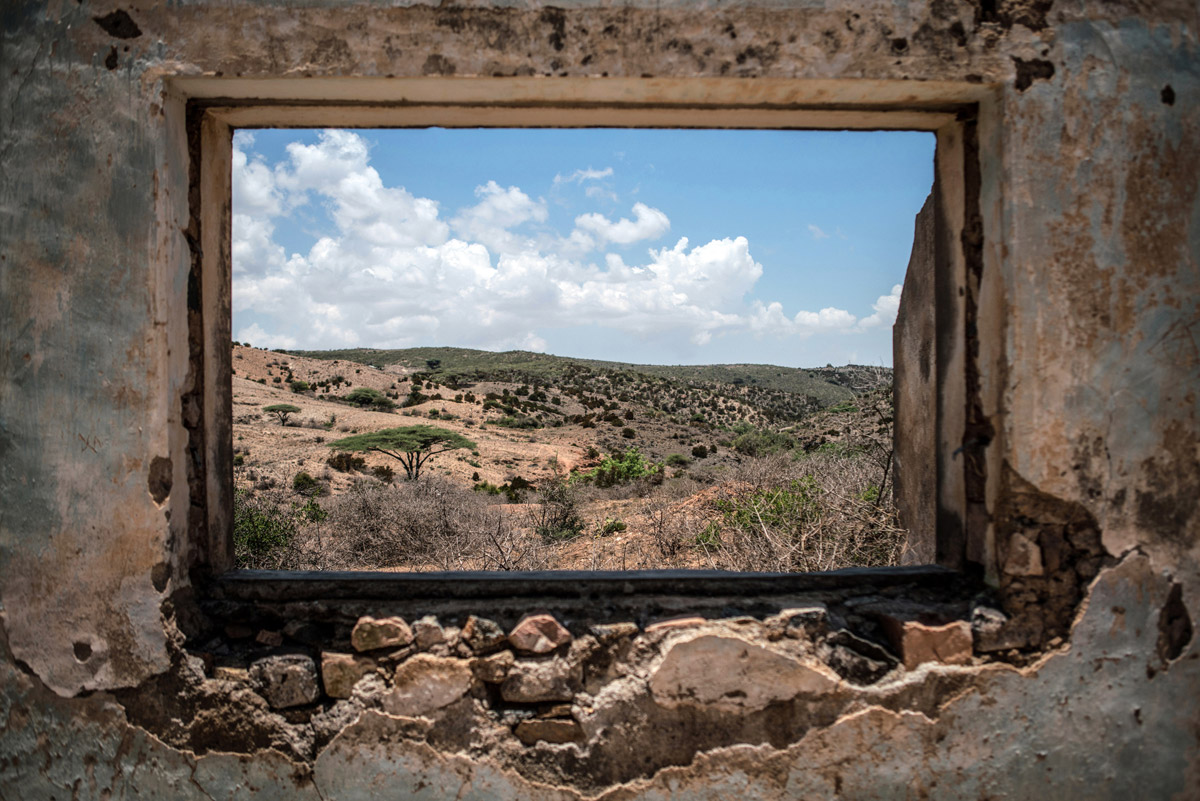
Somalia’s arid landscape as seen from inside a decaying colonial building in the Somaliland town of Sheikh on April 12, 2016. Photo by Nichole Sobecki.
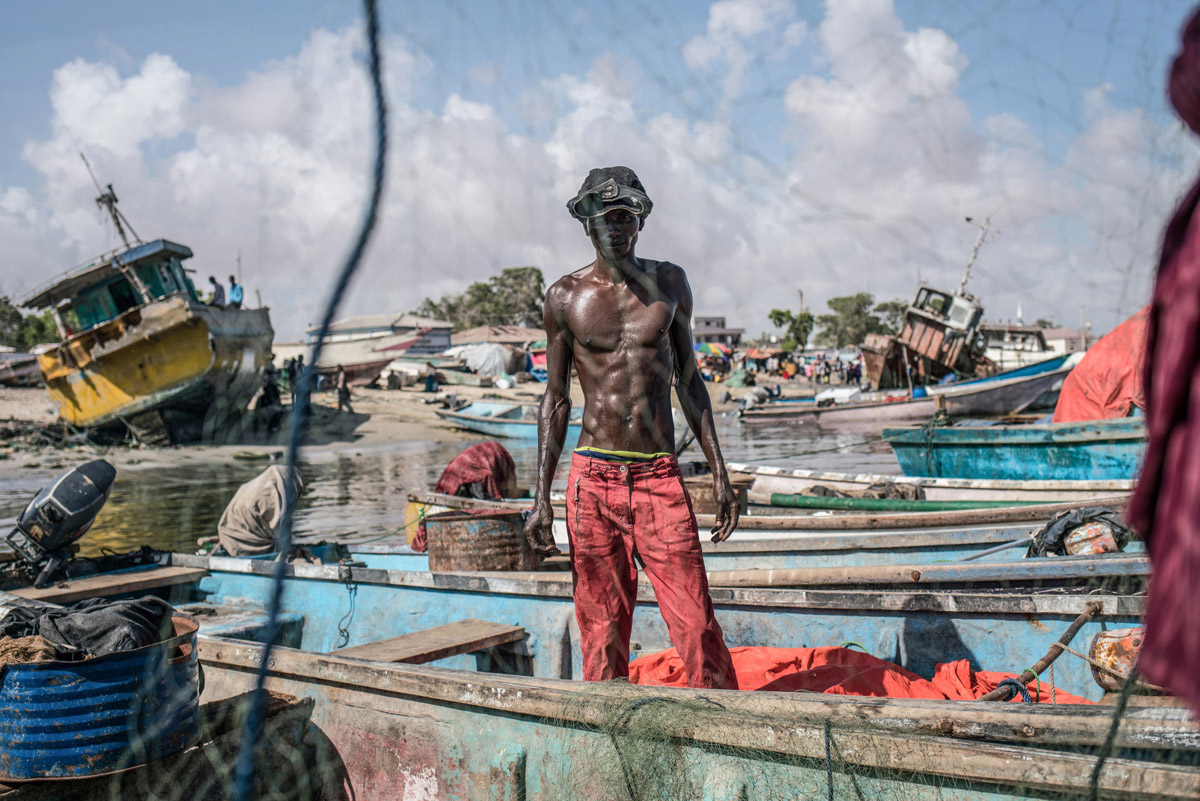
Fishermen untangle their nets in the port of Bosaso, the largest city in Puntland, on May 14, 2016. Photo by Nichole Sobecki.

A woman walks through a cactus field in a drought-stricken area of western Somaliland, a semi-autonomous region in the north of Somalia, on April 6, 2016. Photo by Nichole Sobecki.
AVE. Indeed, it’s crucial that we recognize and demonstrate that we have this responsibility to people that are so far away from us. We are actually causing devastation and destroying ways of life through climate policy and our own lifestyle.
GS. That was very much the impetus behind my work. I wanted to personalize the problem of waste, consumption and excess. We tend to see the problem as happening somewhere else and/or being beyond our personal control. So, I asked friends and neighbours to save their garbage for a week and then lie down in it to be photographed in it. With the resulting pictures, which make up the 7 Days of Garbage series, I’m trying to hint at the notion that we’re both victim and perpetrator. That’s an uncomfortable realization for many of us. I want people to consider what they’re consuming, what they’re buying, what they’re throwing away, how much of that garbage could be composted, and so on. For instance, in concrete terms, do we really need to buy that plastic container of pomegranate seeds or could we buy a pomegranate instead?
There’s a unique challenge, when it comes to documenting the environment and our climate. It’s such an overwhelming truth that it’s a very human reaction to want to turn away or disengage.
NS. So I’m curious how, as photographers that are trying to raise the alarm, you’ve approached getting people to shift away from apathy and advocate for policy change?
BP. With Reframe Climate by Dysturb, we brought images to the streets. First in Paris during the COP21 Climate Change Summit in partnership with the Magnum Foundation. We want to challenge the stereotypes surrounding what climate change looks like. In the past, it’s mostly been illustrated through images of disappearing ice in the Arctic and pictures of the animals from the area that are affected like polar bears. We want to shift the focus towards the diversity of communities impacted around the world. Since, we’ve also pasted the chosen photographs on public walls in Charlottesville, Virginia two years ago for the last Look Festival and now, here in the Bay Area.
CD. When I traveled to the Arctic, I photographed the garbage we collected including above 80 degrees North. I presented the work Aquamess at the American Geophysical Union panel last year on science, art and photography. Showing a picture of a dolls head found where no humans live made people think about how far our trash goes and how we’re using our oceans as a garbage can, in ways that words and data can’t. It called to attention how the oceans flow, how we are all connected. Our brain responds differently when we look at an image versus when we read through, for example the Intergovernmental Panel on Climate Change (IPCC) report or a newspaper article about a heat wave, a flood, a typhoon, etc. Hence, photography plays a really important part in sharing this complex reality and we need a diversity of images to do it.
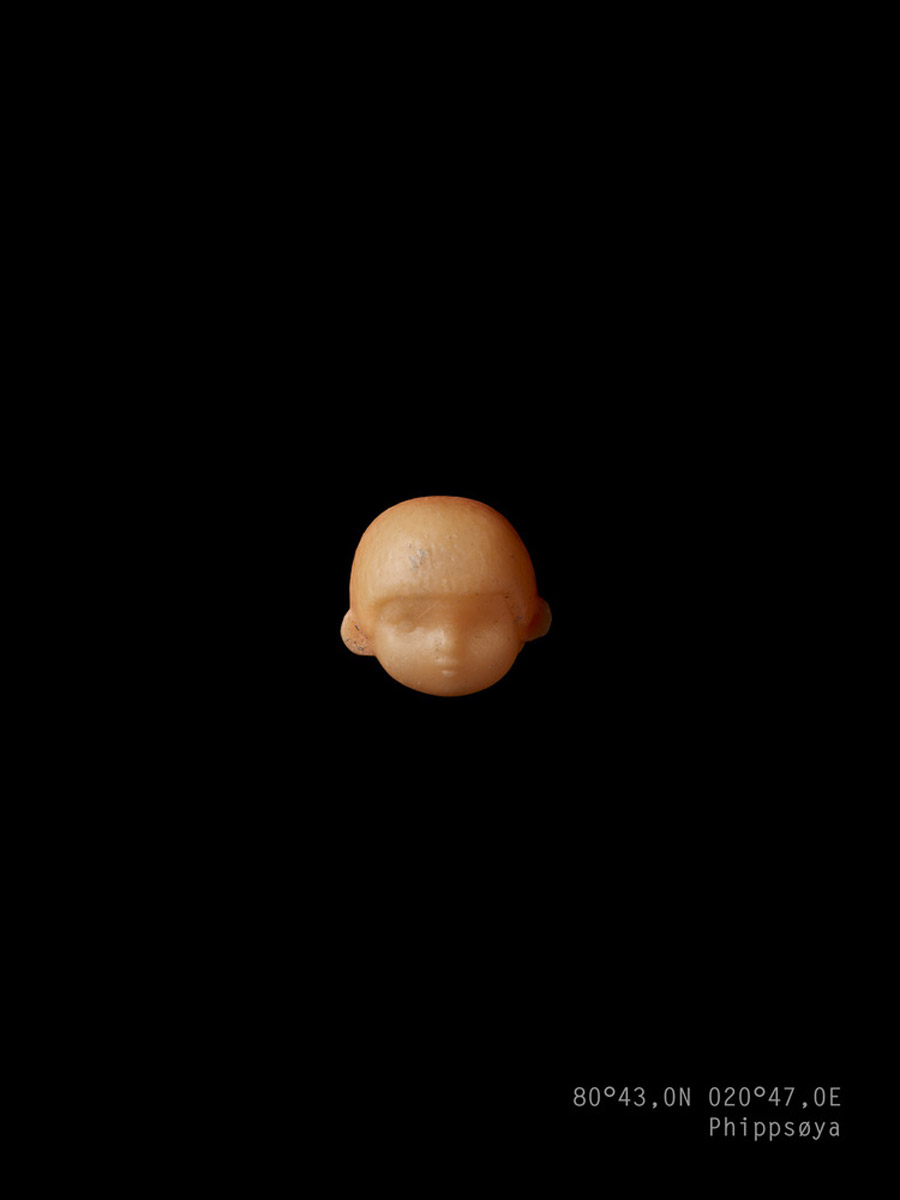
From "Aquamess", a series by Carol Devine
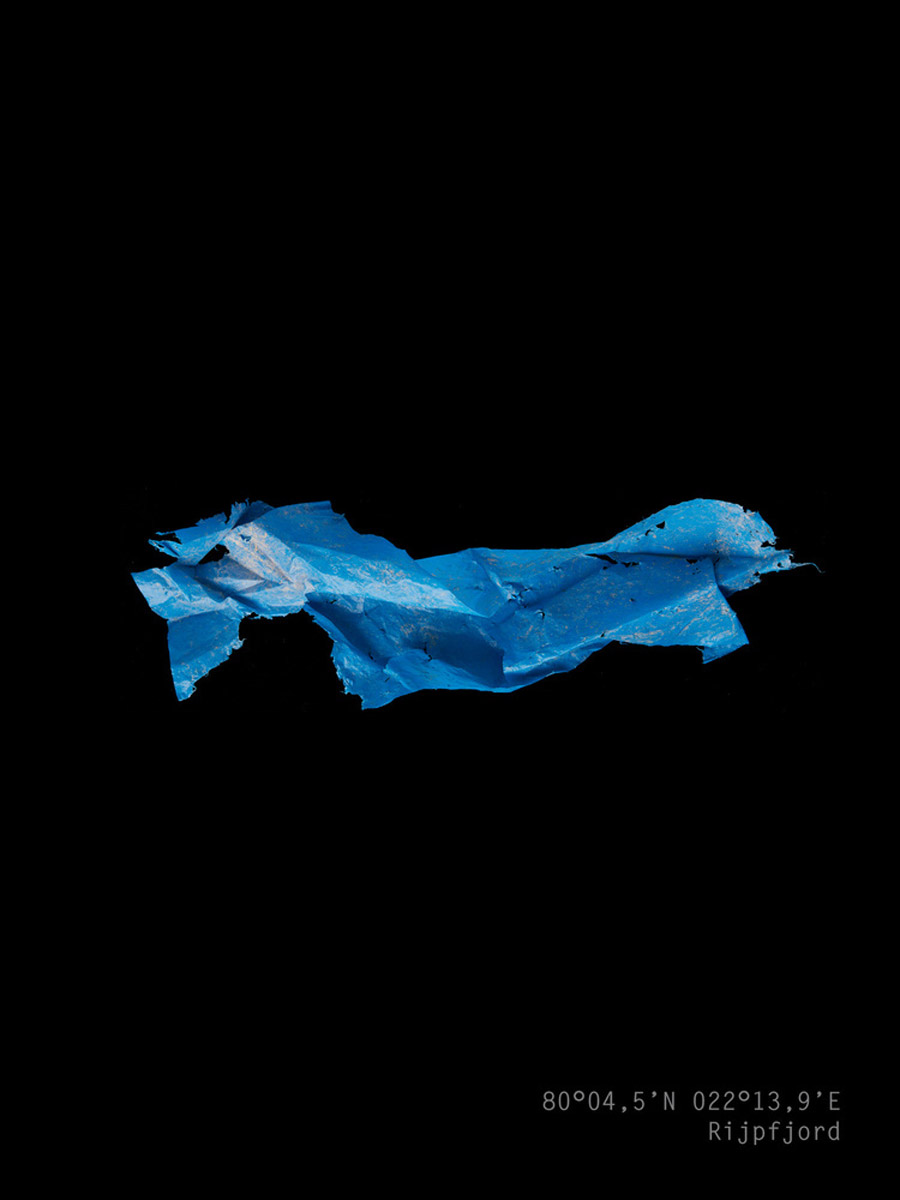
LBR. Carol and Aaron, you both hinted at how interconnected your works actually are, which brings up another challenge: how do we make the public understand that the events you are reporting on are not isolated?
NS. I just got back from San Francisco where I saw Benjamin and the Reframe Climate campaign. We were also both involved in Coal+Ice exhibition that brought together the work of 40 photographers exploring issues of climate change and the environment all over the world. All of the stories were approached in different ways, and yet, together they all served to show the change unfolding. Collaboration is an incredibly important part of this. The more creative we can be in our approaches, whether it’s pasting images in public spaces or re-igniting our sense of connection to nature, the better.
It needs to be attacked from every angle. It is a war. It’s not only about changing our personal behaviours, but also about changing the system that rests on exploiting the environment.
AVE. All of our governments support it. The massive industrial projects that are at the center of my work are pushed forth by government and big capital. We’re being sold this idea that these are beneficial to us, that we need these for jobs and energy, when really it’s sustaining a system that is destroying our planet. So, the goal is to change the mentality of people, to help them recognized that our current system is inherently flawed, that these projects are only necessary if we want to support a system that will lead to our demise…
GS. You hit the nail on the head. The whole capitalist model believes that the economy has to grow. That model of growth is in direct conflict with the survival of the planet. So change will only happen if our core values do.
CD. In 2009, one of the most prominent medical journals, the Lancet, said that climate change is the biggest global health threat in the 21st century. That is a depressing statement. Six years later, in 2015, they revised it. They said, instead that “tackling climate change could be the greatest global health opportunity of the 21st century.” That language shift prompted me to reflect, since I work in global health. We’ve been thinking a lot about what kind of images move people.
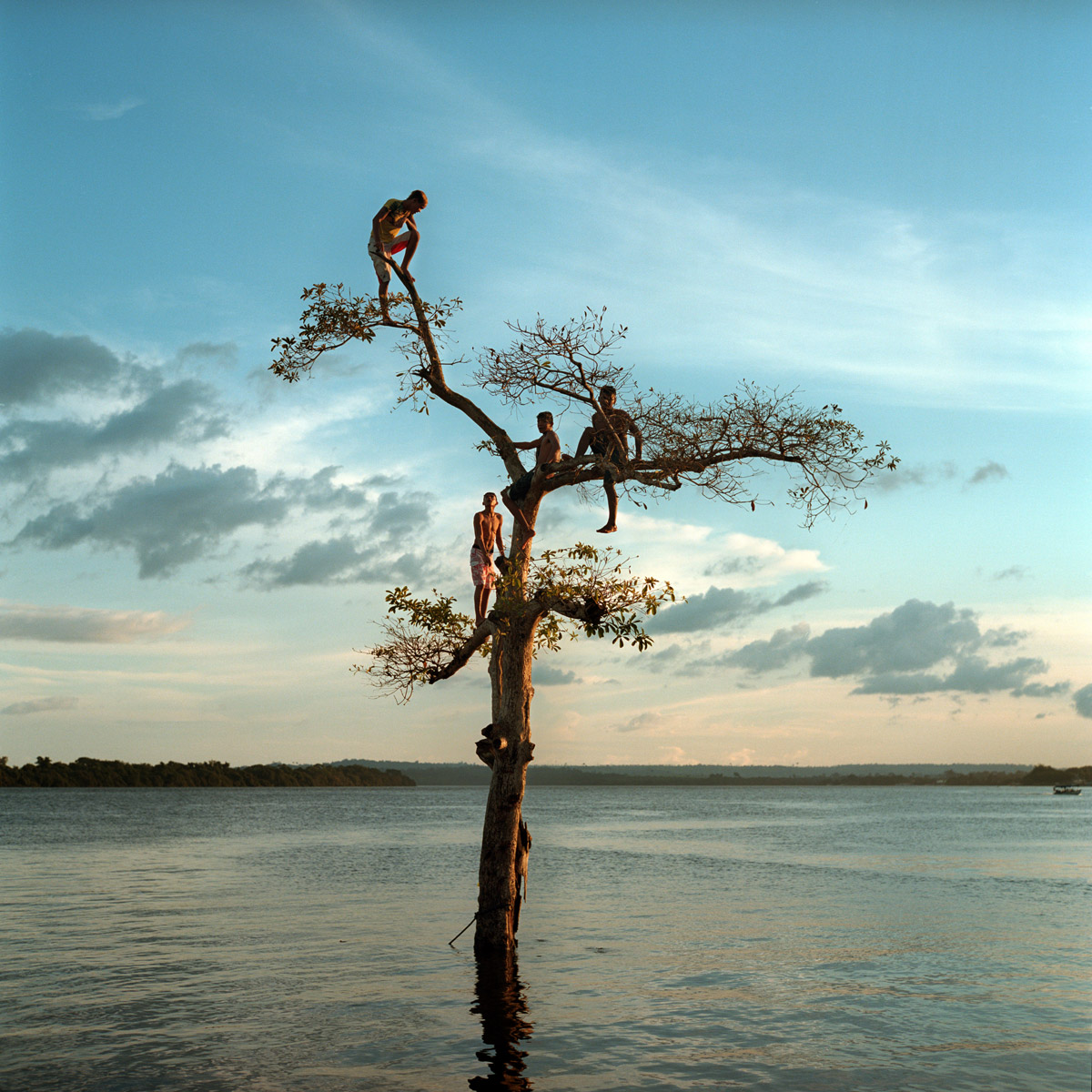
March 29, 2014. A group of boys climb a tree on the Xingu River by the city of Altamira, Brazil. One third of the city will be permanently flooded by the nearby Belo Monte Dam displacing over 20,000 people. It will be the third largest dam in the world.
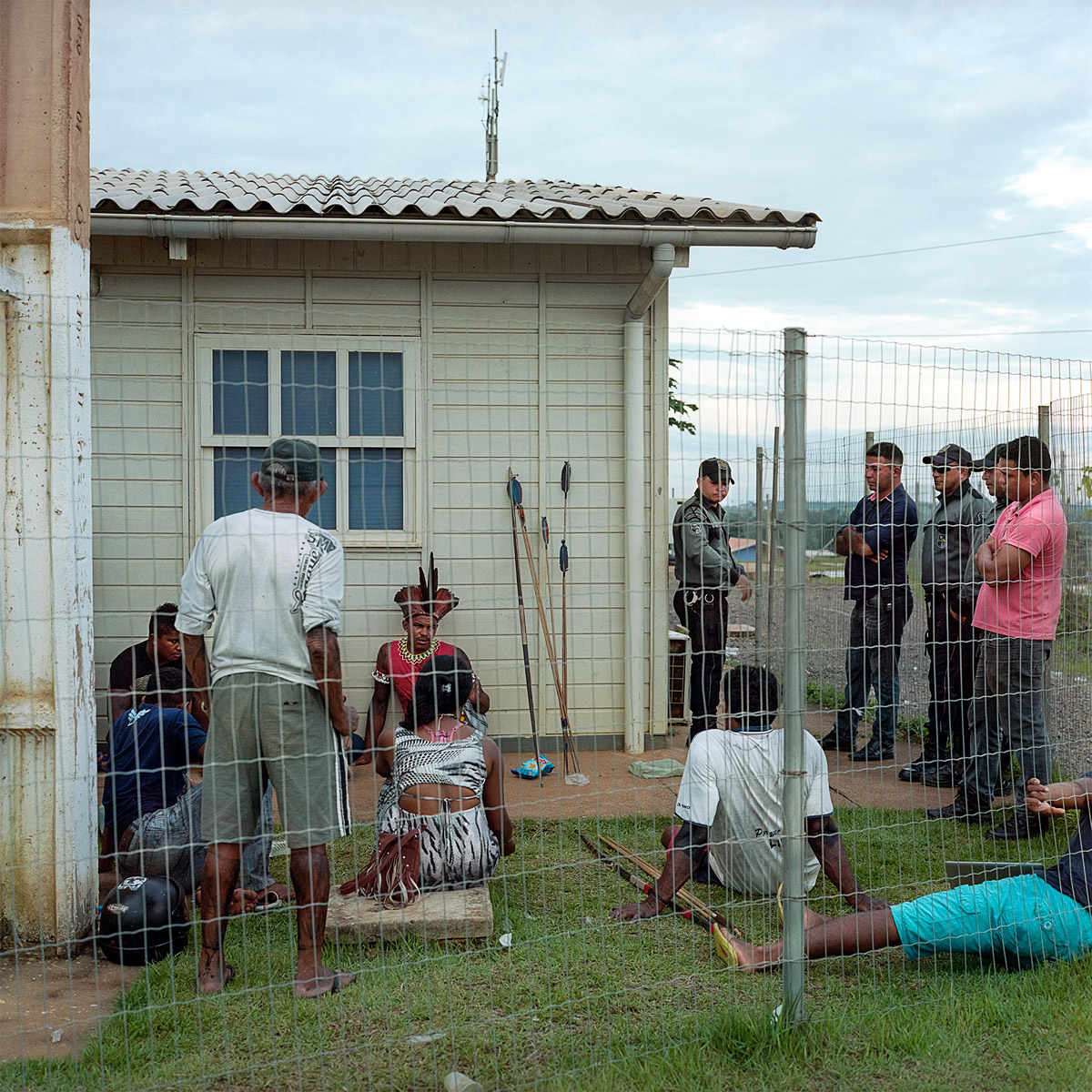
April 5, 2016. Cassici, or cheif, of the Juruna indigenous tribe, Gilliarde Jacinto, leads an indigenous occupation of the offices of Norte Energia, the company building the Belo Monte Dam, in the resettlement district of Jatoba in the city of Altamira. Occupations and protests are a constant part of the regional indigenous communities fight for compensation and promised programs from the company, although they rarely bear fruit.
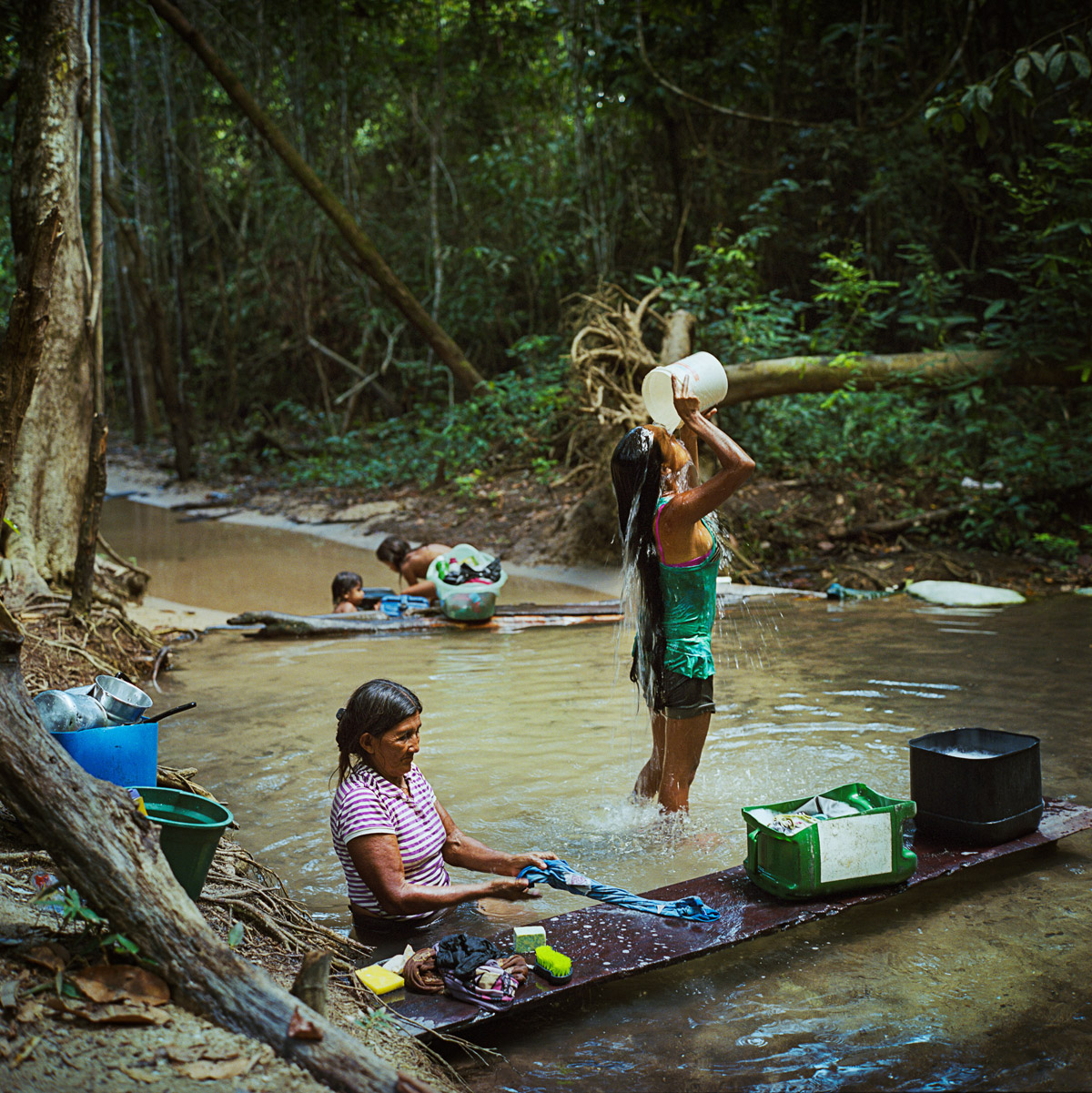
December 15, 2014. Munduruku women bathe and do laundry in a creek by the village of Sawre Muybu. The Munduruku are currently fighting against government plans to construct a number of hydroelectric dams on the Tapajos River in the Amazon rainforest that would flood much of their traditional lands in Para State, Brazil. Brazil is planning to build over 60 new Dams in the Amazon Rainforest. The dams are part of Brazil's Growth Acceleration Programme (PAC), which also includes a rapid expansion of mining in the gold rich region.
LBR. So far, we’ve assumed that we’re dealing with an audience that recognizes that climate change is an issue, what about those who are not on that same page, how can photography shift their thinking?
NS. Highlighting impact in different parts of the world in unexpected ways is important. I loved what you said Carol about the medical impact of climate change. That isn’t a connection people immediately draw. In my case, I considered the relationship to security. A lot of the clarion calls came from unexpected places. In 2014, the Pentagon released a report calling climate change a threat multiplier and a major threat to American security. So parts of the United States’ military is incredibly concerned, not because they view themselves as environmentalists, but because they see the tremendous security implications of a changing environment. So there’s a possibility of engaging people by highlighting realms of impact that they might not be informed about.
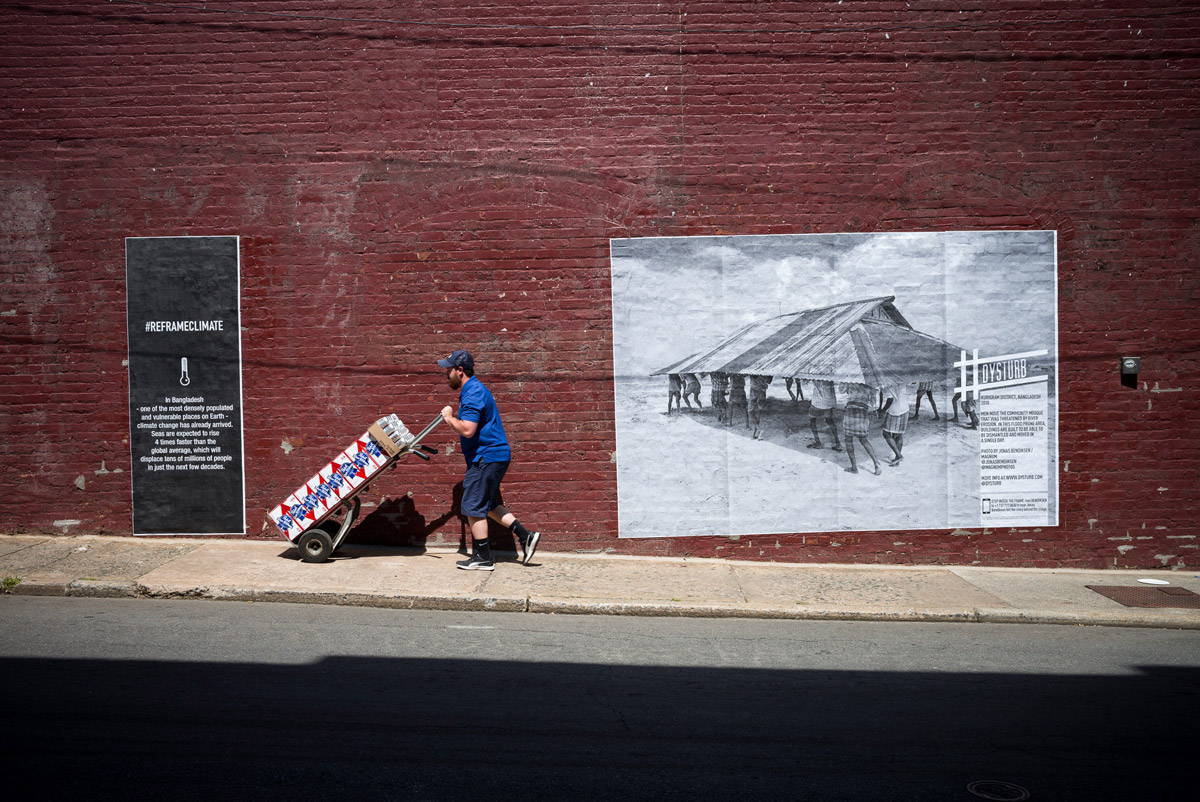
#Dysturb paste-ups at Look3 festival, part of #reframeclimate with Magnum Foundation. Photo by Benjamin Petit
LBR. Nicole, you just used the word environmentalist. A lot of the photographers that do work about the environment are deemed activists. For a really long time, that term was at odds with photojournalism. How do you reconcile the two?
NS. When I’m in the field, it’s important for me to be fair in my representation, to consider multiple perspectives and make sure I’m covering the fullest version of the story as I can. But, I absolutely have a point of view that I try to get across. My goal is to get people to engage. In some sense, there’s an activist element in that. I never felt the drive to work purposefully and to be objective were at odds.
BP. We always have to ask ourselves that question very openly, especially because of our methods. Wheat pasting in public space is very much akin to a lot of activists work. When we choose the photos, we try to get the more diverse voices and a global outlook. We’re not there to tell people exactly what to think or what to do; we’re there to show them the facts. Dysturb is the intermediate between the photographers and the audience.
It’s a funny thing to say you’re neutral and then speak out against some governments. But silence we know is deadly. It’s what Gregg said earlier: we are the victims and we, the rich countries, are the perpetrators of climate change.
CD. To be able to work with the most affected people by climate change, we, at Médecins Sans Frontières, insist that we’re impartial, that we’ll assist anyone based on needs and not political agenda.
AVE. Photography is my way to communicate. The reason I spend so much time and dive so in depth is because it’s an issue that I deem of the utmost importance. There’s no question that I have a deep perspective and a message that I’m trying to communicate. That in its very nature is activism, but I try to do it with the ethics of journalism: to be accurate, to not disregard information simply to uphold my point of view. Through the process, you become more aware of the complexity of the issue. It’s not black and white. We all live it. We’re all contributing to it, even those of us actively engaged in creating change. We all have to be humble.
GS. I would be uncomfortable if I was simply pointing at people and saying: “you’re the problem and you need to change your habits”. It was important for me to participate in the project. So I photographed my wife and son lying in our own garbage. It’s important for people looking at the photographs to know that the photographer is in it too.
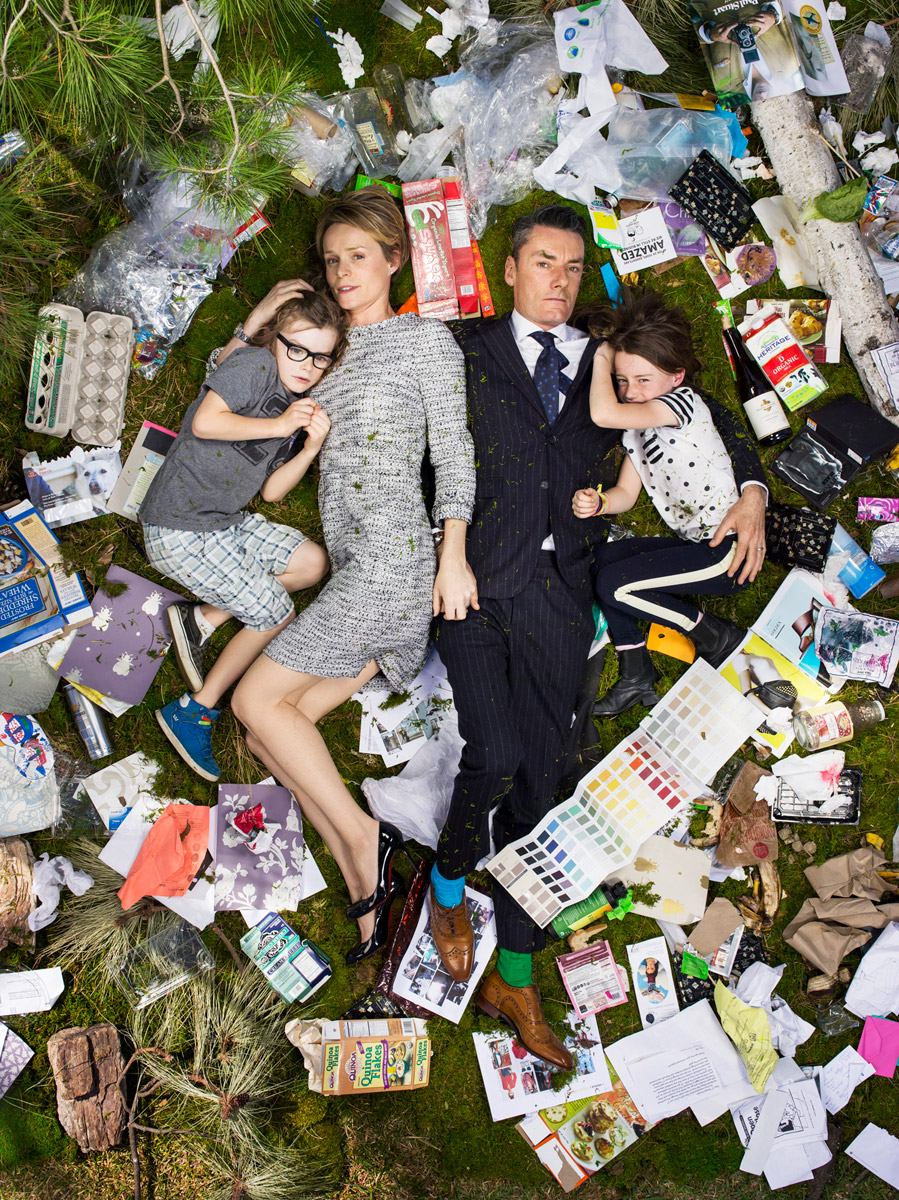
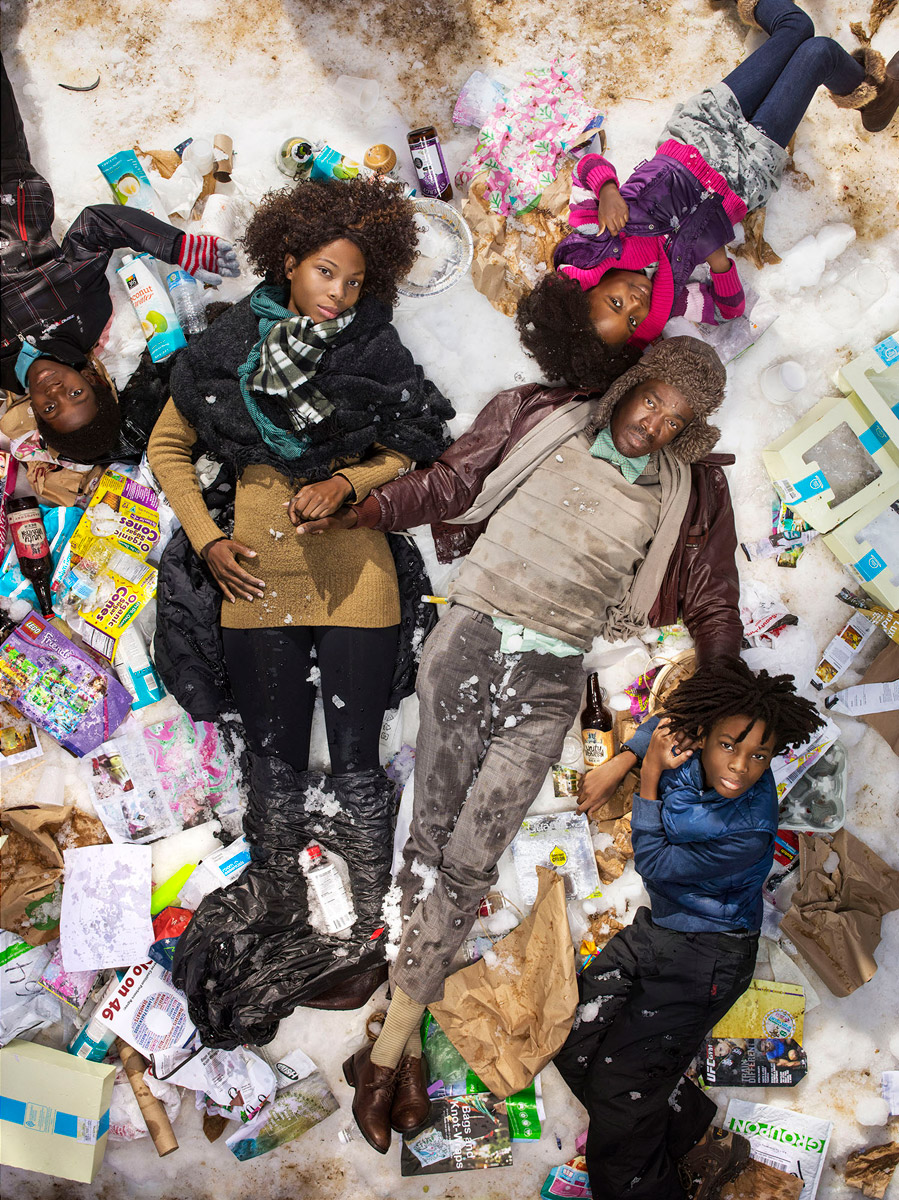
LBR. A lot of you have spoken about the current system that places economic prosperity over environmental health, how do we lead people to think deeply about that?
AVE. That’s what I’m trying to do with my work, which deals with massive infrastructures supported by governments and corporations. If we can see the real impacts of what we’ve done, maybe the political capital will shift and the next project won’t happen.
NS. Strong photography can play a role in building a body of evidence that demonstrates these relationships, the impact that the West is having on the rest of the world. Broadly speaking, photography is a tool to hold the powerful to account. Climate change is not a problem that will be solved by a government, by a single leader. This is a war, as Aaron said earlier, that we all need to be engaging with in our individual lives and as citizens.
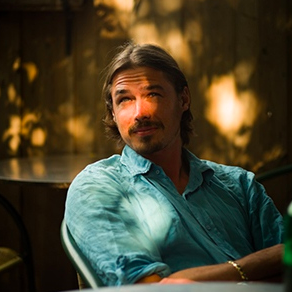
A documentary photographer, Aaron Vincent Elkaim approaches his work with a focus on narratives where traditional culture and environmental degradation collide. Since 2011 he has committed himself to exploring colonialist narratives where people still connected to the natural world are being impacted by industrial development.
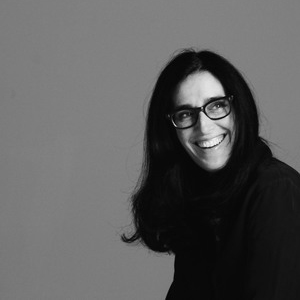
Carol Devine is a researcher, writer, activist, and humanitarian professional. She is strategic advisor to the Museum of AIDS that aims to open in 2017 in South Africa. She has also worked for Médecins Sans Frontières (MSF) in Rwanda, Southern Sudan, and East Timor and was MSF Canada’s Access to Essential Medicines Campaigner, fighting for accessible, effective, and affordable medicines for developing countries.

Gregg Segal approaches his work with the sensibility of a sociologist – using the medium to explore culture – our identity, memory, behavior, roles, beliefs, and values. His photography utilizes stark contrast and juxtaposition to engage viewers and provoke reflection. He draws on his background in writing and film to make pictures that are single frame dramas with a sense of something that has or is about to happen.

An award-winning photographer and filmmaker based in Nairobi, Kenya, Nichole Sobecki is represented internationally by the photo agency VII. She aims to create photographs and films that demand consideration for the lives of those represented – their joys, challenges, and ultimately their humanity. In 2018, she received the Magenta Foundation Flash Forward Award for reporting on environmental issues.
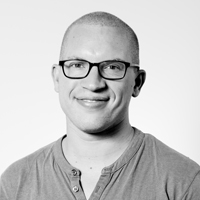
Benjamin Petit is a French documentary photographer and the co-director of #Dysturb, a nonprofit formed by photojournalists wishing to make visual information freely accessible to a wider audience by pasting large images in city streets. Het has led #Dysturb campaigns in various city hubs, teaming up with institutions such as the United Nations, the European Parliament, the Magnum Foundation, Foam Museum and Instagram and is a 2018-2019 John S. Knight Fellow in Journalism Innovation at Stanford University, and a Fulbright scholar.
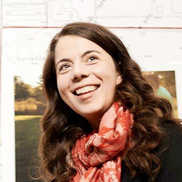
Laurence Butet-Roch, a member of the Boreal Collective and Muse Projects, is a freelance writer, photo editor, photographer and educator based in Toronto, Canada committed to encouraging critical visual thinking. Her words have appeared in the British Journal of Photography, The New York Times Lens Blog, TIME Lightbox, National Geographic, The New Yorker, Polka Magazine, PhotoLife, BlackFlash and Point of View. She is the editor of Flash Forward Flash Back.
The conversation continues!
If you’d like to add your voice, submit your response to our editor,
Laurence Butet-Roch at laurence@magentafoundation.org


